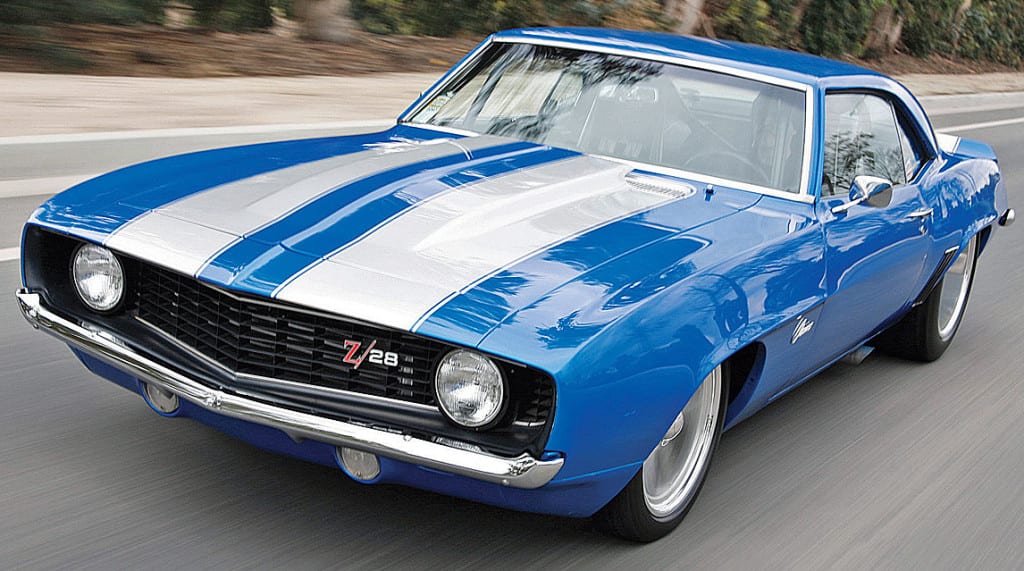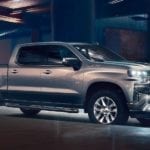Have you ever wondered how your favorite Chevy performance vehicles got their names? There are interesting stories behind many of the models at local dealers that sell Chevrolet in Miami.
So here are a few of the best-known names demystified. Won’t you look impressive when you pull out one of these stories the next time your hanging with your buddies.
Corvette
The first Corvette was introduced as a concept car in 1953. The sports car was created by Harley Earl, GM’s first head of design.
However, the Corvette name is credited to Myron Scott. Scott was the originator of the Soap Box Derby race. In his promotion of national soap box car races, he managed to get a sponsorship from Chevrolet.
The connection lasted, and Scott later went on to work for the automotive manufacturer. When Chevy was trying to come up with a name for their 1953 concept car, Scott suggested the moniker, Corvette, because it was the name of a fast, agile warship.
Stingray
The design chief who followed Earl, Bill Mitchell, built a concept car on an old SS chassis he had gotten his hands on. The concept had sharp creases, a long nose, and a fluid vibe, reminiscent of a stingray.
He gave it that name, dreaming that the body style might one day make it to production. Meanwhile, Chevy’s leading engineer at the time, Zora Arkus-Duntov was working on creating a chassis that would make the next Corvette mind-blowing.
With a combination of the two, the 1963 Corvette Sting Ray arrived on the scene with its stunningly chic fastback style.
The name popped in and out of use for some time, changing from one word to two in later models. But then it disappeared for a number of years before being recently resurrected in 2014 for a brand new Corvette.
The 2014 Stingray received the most powerful engine Chevy had ever put in a Vette, offering drivers 455 horsepower to put to good use. It’s incredibly fast, powerful, and sleek, making the Stingray name a perfect fit.
Z06
The Z06 was a Corvette race pack that was first offered in 1963, but there was quite a bit of intrigue surrounding it. The package, which was designed to make track-ready factory Corvettes, was initially developed during a ban on factory-sponsored racing.
And while the racing world was in a bit of a lull, Chevy knew it wouldn’t last forever. They began creating the Z06 during the ban, and it was offered as an option for Corvette orders, but in a very secretive way.
The order forms had an area with some very fine print that only customers who were in-the-know would understand. But a number of competition-hungry buyers did, and they got their hands on the Z06. After the ban had ended, the performance package was offered more openly.
The Z06 name was taken directly from Regular Production Option (RPO) codes. Brands that fall under the General Motors umbrella, like Chevy, all use RPO codes to denote specific options or mods.
Because the Z06 package provided special performance enhancements, it had a unique RPO. Many people refer to Vettes equipped with the race pack as the first Z06s.
However, the name was officially adopted by a Corvette in 2001, when Chevy added the Z06 to their lineup. The modern-day model became one of a limited number of Chevy’s in history to sport an RPO code as a name.
Z/28
Originally introduced in 1966 for the following model year, this souped up Camaro was born out of the desire to create a racer more capable than Ford’s Mustang.
The Z/28 was given an enhanced engine that fell just below the maximum size specified by the Sports Car Club of America (SCCA).
To make the package completely irresistible, Camaro Z/28’s also included highly-tuned suspension, wide tires, dual exhaust, and extra responsive steering.
Due to the enhancements, the Z/28 became another one of the rare Chevys to wear its own RPO code as a name. Original models rocked the slash mark, but it was later dropped.
However, when the Z/28 returned in 2014, it was given the privilege of boasting the slash. Though the Chevy team went back and forth about whether to add it to the name, the slash won out.
A more lightweight version of the Camaro, packed with specialized parts from Chevy and some of the best parts makers in the industry, the current Z/28 definitely honors the memory of the original model it’s named after.
ZL1
The creation of the ZL1 came out of a bit of tricky finagling on the part of a Chevrolet dealer named Fred Gibb. He was fairly adept at using Chevy’s Central Office Production Order (COPO) process to get unique high performance models for his dealership.
The COPO was mostly intended for special circumstances, like the production of specialty vehicles for commercial use. However, it could also be manipulated to order high powered muscle cars.
Gibb and a close friend who did a lot of tuning for him, Dick Harrell, came up with the idea for a Camaro with Chevy’s ZL1 engine. The ZL1 was only intended for the track, so it was a pretty big stretch.
However, when Gibb talked to Vince Piggins, one of Chevy’s head engineers, Piggins agreed, as long as the dealership ordered a minimum of 50 units.
Gibb agreed and the rip-roaring Camaros were made, becoming some of the fastest cars Chevy had ever produced or would produce for many years.
Unfortunately, the 1969 ZL1’s did not sell well because of their high price stickers. They were shuffled around between dealerships, and some dealers even chose to replace the engines with more affordable ones to move their inventory.
Because of the limited number produced, 1969 ZL1’s are now some of the most valuable collectibles around, and they will always be remembered for their outrageous power and speed.
Flash forward several decades to the 2000s. Chevy had been working on another Mustang-killer for some time, and was almost ready to reveal it to the public.
It was generally known that the new Camaro was going to revive the Z/28 name because it was another model intended to take Ford’s pony car down a notch.
However, right before the reveal, Al Oppenheiser, the Camaro’s chief engineer, had a serious change of heart. He just didn’t feel like the Camaro they had been working on was the one he envisioned wearing the Z/28 name.
Though it was incredibly fast and well-built, he didn’t feel the model quite matched up with what the original Z/28 was known for. So he went to Chevy’s leaders to plead his case, and they listened.
They agreed to rename the car and push the release of the Z/28 back to make time for further development. However, the Camaro in question still needed a name.
A quick decision was made, and because of the car’s unbelievable 580 horsepower, the ZL1 badge was chosen on to replace all markings that were already on the display model.
Various suppliers were informed about the change, and the Chevy team had to rewrite their introduction for the vehicle. But the swap ultimately went through, and the ZL1 hit the market while the Z/28 hit the drawing board again.
When the Z/28 did hit the market in 2014, it had all of the specialized racy details that Oppenheiser had pictured. And with its track-ready specs, it became part of Chevy’s tradition of distinguished muscle cars.








